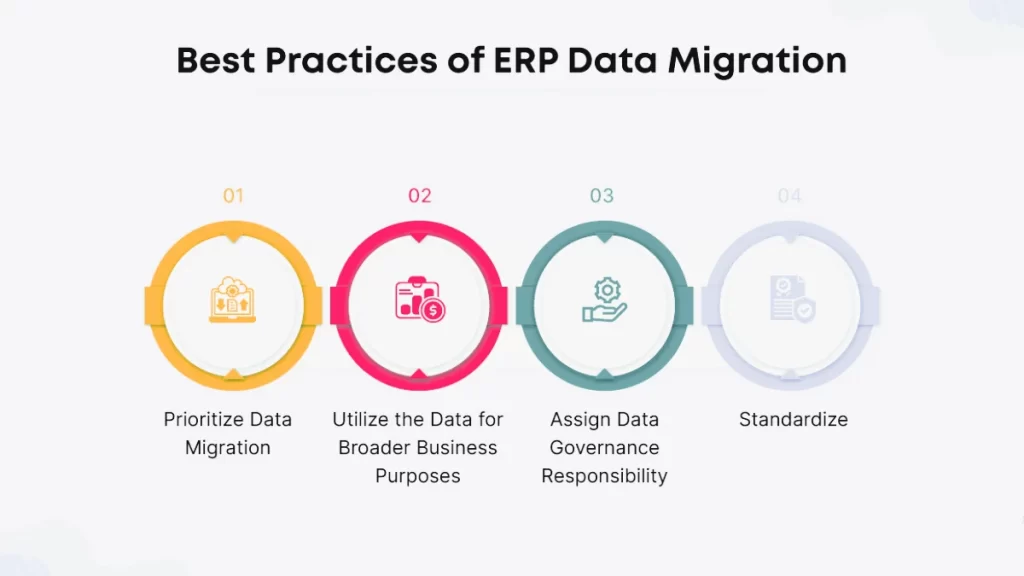Enterprise Resource Planning (ERP) migration presents a crucial step for businesses looking to stay competitive by adopting modern technology. However, this process is not without its challenges. In this article, we explore the complexities of ERP migration, strategies for success, and how to select the right partner for your journey.
Understanding ERP Migration
ERP migration involves transferring your existing ERP solution to a new version, either by the same provider or a different one. This encompasses moving data, functionalities, and configurations to the new system. There are several types of ERP migration, including:
1. Database Migration: Moving only the database while keeping the rest of the ERP system intact.
2. Database Migration and Change: Migrating the existing database from one vendor to another.
3. Database and Backend Migration: Shifting the entire backend and database from on-premises to the cloud.
4. Complete ERP Migration: Migrating the entire ERP system to a new vendor or from on-premises to the cloud.
5. Migrating to a Custom ERP System: Transitioning from an existing ERP system to a custom-built solution.
Why Migrate ERP Systems?
– Enhanced Functionality: Businesses often migrate to access advanced functionalities and technologies to improve operational efficiency.
– Cloud Benefits: Cloud-based ERP solutions offer advantages such as lower total cost of ownership, remote access, automatic updates, and predictable costs.
– Maintenance Costs and Vendor Support: High maintenance and licensing fees, coupled with lack of vendor support for legacy systems, can drive the need for migration.
Challenges of ERP Migration
1. Inaccurate and Redundant Data: Legacy systems may contain data quality issues like missing, duplicate, or corrupted information.
2. Stakeholder Buy-In: Obtaining buy-in from stakeholders across departments is crucial for a unified data set and smooth migration.
3. Limited Project Resources: Underestimating costs and resources can lead to overruns, necessitating additional support.
4. Regulatory Issues: Compliance regulations like GDPR and CCPA require maintaining data security throughout the migration process.
5. Delayed Data Validation and Testing: Postponing data migration and testing can stall the overall ERP migration process.
ERP Data Migration Strategy
1. Assemble a Migration Team: Form a team with representatives from each department and database migration expertise.
2. Map Your Data: Assess current data, resolve inconsistencies, and map it to the new ERP database.
3. Decide on What to Migrate: Identify relevant data and avoid migrating obsolete or irrelevant information.
4. Migrate and Test: Execute the final migration, conduct thorough testing, and ensure ERP functionalities work as expected.
Best Practices for Successful ERP Migration
1. Project Plan: Create a comprehensive plan encompassing scope, team, cost, and compliance considerations.
2. Data Plan: Develop a data plan, perform data cleansing, set up validation rules, and be selective about data migration.
3. Early Data Migration: Initiate data migration and testing early, creating a migration checklist to identify and address issues.
4. Access to an ERP Migration Partner: Partner with a provider like Spinnaker Support for technical expertise, custom migration planning, and ongoing support.
Selecting an ERP Migration Partner
– Look for a partner with technical know-how, custom migration planning, and a dedicated support team.
– Choose a partner experienced in your niche and proficient in cloud migrations or specific ERP systems like SAP.
– Check reviews, case studies, and cost-effectiveness to ensure alignment with your business needs and budget constraints.
Conclusion
ERP migration is a significant undertaking that requires careful planning and execution. Partnering with a reliable provider like Spinnaker Support can streamline the process and ensure a successful transition to your new ERP system. By following best practices and leveraging expert guidance, businesses can navigate ERP migration challenges and set the stage for future growth and innovation.
